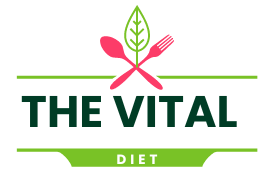
It’s no secret that many people enjoy a drink now and then, whether it’s a glass of wine with dinner, a beer at a barbecue, or a cocktail at a party. But have you ever wondered exactly what happens to your body when you consume alcohol? Let’s explore the science behind it and how it affects various aspects of our health.
Disclaimer: This article is for educational purposes only and should not replace professional medical advice.
The Basics of Alcohol
Alcohol is a substance created by the fermentation of yeast, sugars, and starches. It rapidly seeps from your stomach and small intestine into your bloodstream and is broken down by the liver. With the liver only able to metabolize a small quantity at once, the remaining alcohol circulates throughout the body1.
Alcohol is classified as a nutrient as it provides seven calories per gram. Unlike carbohydrates, proteins, and fats, it cannot be stored for energy. Instead, it remains in the bloodstream until it’s eliminated, putting a significant strain on the liver2.
Overconsumption, or exceeding the recommended weekly limits, can lead to health issues over time. Guidelines suggest that men should limit their intake to no more than two drinks per day, and women should have no more than one3.
Potential Advantages of Alcohol Consumption
Some research indicates that moderate drinking could reduce the risk of cardiovascular disease, diabetes, stroke, and high blood pressure. It can also be a source of certain nutrients and may help reduce stress. However, these benefits are highly individual and can be influenced by your genetics, diet, exercise habits, and overall health4.
Cardiovascular Protection
Light to moderate alcohol consumption may protect against heart disease and stroke. There’s some evidence that moderate alcohol consumption can slightly raise HDL, or “good” cholesterol5.
Resveratrol, found in red wine, has been extensively studied for its potential heart-protecting antioxidants5.
Nutrient Source
Moderate drinking can provide some nutrients. Beer, for instance, contains B vitamins, minerals, antioxidants from malt and hops, and even probiotics in some cases6.
However, alcohol should not be your primary nutrient source. Excessive drinking can interfere with nutrient absorption and vitamin metabolism, leading to deficiencies7.
Stress Reduction
Low to moderate alcohol consumption has been linked to positive mental and socio-emotional health. This is likely due to its stress-reducing and social integration effects8.
Social Bonding
Research shows that alcohol can facilitate social connection and bonding, especially in unfamiliar groups. Sharing a drink can help find common ground9.
Considerations and Risks
However, even at low and moderate amounts, alcohol comes with risks. Drinking too much is associated with poor cardiovascular health, and any potential benefits do not outweigh the increased risk of cancer posed by alcohol consumption10.
Furthermore, alcohol is a significant contributor to alcoholic liver disease and can promote liver inflammation11.
It’s also essential to mention that certain individuals should avoid alcohol entirely, such as those who are pregnant, breastfeeding, or have certain genetic mutations1213.
Setting Alcohol Goals
While alcohol is not a necessary part of a nutritious diet, it can be included in moderation if you enjoy it or wish to partake in its social aspect. A standard drink calculator can help you understand how much you’re consuming.
In Conclusion
Drinking alcohol in moderation can offer some health benefits, from reducing the risk of cardiovascular disease and stroke to reducing stress and anxiety. However, heavy or excessive drinking can lead to significant health problems, such as liver disease, cancer, and cardiovascular issues. Always consult with your healthcare provider for individual recommendations or if you’re concerned about your alcohol use.
Footnotes
- Le Daré B, Lagente V, Gicquel T. Ethanol and its metabolites: update on toxicity, benefits, and focus on immunomodulatory effects. Drug Metab Rev. 2019;51(4):545-561. doi:10.1080/03602532.2019.1679169 ↩
- Paquot N. Le métabolisme de l’alcool [The metabolism of alcohol]. Rev Med Liege. 2019;74(5-6):265-267. ↩
- National Institute on Alcohol Abuse and Alcoholism. Drinking levels defined. ↩
- Tizabi Y, Getachew B, Ferguson CL, et al. Low Vs. High Alcohol: Central Benefits Vs. Detriments. Neurotox Res. 2018;34(4):860-869. doi:10.1007/s12640-017-9859-x ↩
- Piano MR. Alcohol’s effects on the cardiovascular system. Alcohol Res. 2017;38(2):219-241. PMID:28988575 ↩ ↩2
- Sánchez-Muniz FJ, Macho-González A, Garcimartín A, et al. The Nutritional Components of Beer and Its Relationship with Neurodegeneration and Alzheimer’s Disease. Nutrients. 2019;11(7):1558. Published 2019 Jul 10. doi:10.3390/nu11071558 ↩
- Dervaux A, Laqueille X. Le traitement par thiamine (vitamine B1) dans l’alcoolodépendance [Thiamine (vitamin B1) treatment in patients with alcohol dependence]. Presse Med. 2017;46(2 Pt 1):165-171. doi:10.1016/j.lpm.2016.07.025 ↩
- Moreno-Llamas A, De la Cruz-Sánchez E. Moderate beer consumption is associated with good physical and mental health status and increased social support. Nutrients. 2023;15(6):1519. doi:10.3390/nu15061519 ↩
- Dunbar RIM, Launay J, Wlodarski R, et al. Functional benefits of (modest) alcohol consumption. Adapt Human Behav Physiol. 2017;3(2):118-133. doi:10.1007/s40750-016-0058-4 ↩
- Rumgay H, Murphy N, Ferrari P, Soerjomataram I. Alcohol and cancer: Epidemiology and biological mechanisms. Nutrients. 2021;13(9):3173. doi:10.3390/nu13093173 ↩
- Thomes PG, Benbow JH, Brandon-Warner E, et al. Dietary fructose augments ethanol-induced liver pathology. J Nutr Biochem. 2017;43:141-150. doi:10.1016/j.jnutbio.2017.02.008 ↩
- Sebastiani G, Borrás-Novell C, Casanova MA, et al. The effects of alcohol and drugs of abuse on maternal nutritional profile during pregnancy. Nutrients. 2018;10(8):1008. doi:10.3390/nu10081008 ↩
- Guo H, Yu X, Liu Y, et al. SGLT2 inhibitor ameliorates endothelial dysfunction associated with the common ALDH2 alcohol flushing variant. Sci Transl Med. 2023;15(680):eabp9952. doi:10.1126/scitranslmed.abp9952 ↩





